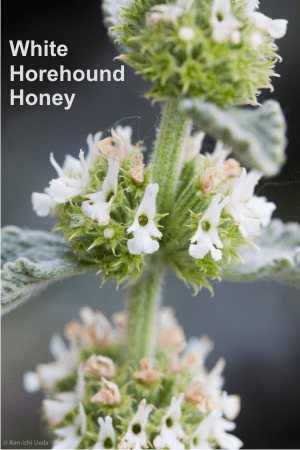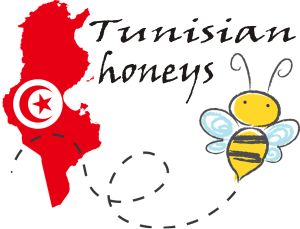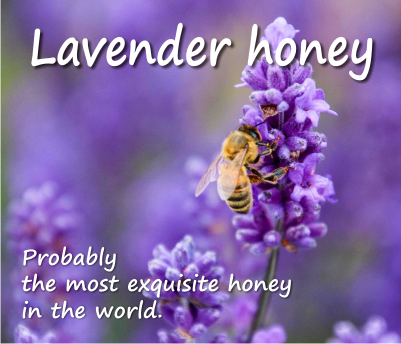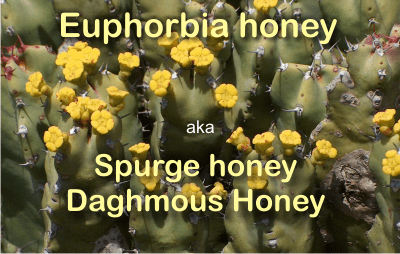Scientific name: Marrubium vulgare, but also known by its synonyms: Marrubium apulum. Marrubium ballotoides. Marrubium germanicum. Marrubium uncinatum.
Other names: white horehound or common horehound. In several Arab-speaking countries it is known as merriwa, ifzi, amarriw, ifza or marrîwet.
Etymology: it derives from two Old English forms: “hoar”, meaning “white”, “light-colored” and “hune” a word of unknown origin designating a class of herbs or plants, which was altered in time by folk etymology. Others say the name derives from a Hebrew word meaning bitter.
Range: it is native to Europe, northern Africa, and southwestern and central Asia. It is also widely naturalized in many places, including most of North and South America. It the 19th century it was introduced to southern Australia, as a medicinal herb, but it rapidly became a weed of native grasslands and pastures.
Characteristics: it’ s a perennial weed, a flowering plant in the mint family (Lamiaceae). It grows up to 0.5 m (1ft 8in) in well-drained soils, though it flourishes best in a poor dry soil. Some reports say that the plant flourishes best where there is plenty of nitrogen in the soil. It prefers neutral to alkaline soil conditions and requires a warm sunny position.
Very similar in appearance to mint.
The leaves are 2–5 cm (0.8–2.0 in) long, with a densely crinkled surface, and are covered in downy hairs. The plant is well-known due to these leaves, which are used as seasoning and in medicine. They are bitter and pungent and are used sometimes to flavor herb beer or liqueurs.
From the leaves people make horehound ale (a type of beer with a bitter flavor and higher alcoholic content) and a mild pleasantly flavored tea. In folk medicine they are used to make hard lozenge candies that are considered to aid digestion, soothe sore throats, and relieve inflammation.
 white horehound leaves and flowers, picture credits Raul654, Ken-ichi Ueda and Kurt Stüber
white horehound leaves and flowers, picture credits Raul654, Ken-ichi Ueda and Kurt Stüber
The flowers are white, borne in clusters on the upper part of the main stem. They will attract many visitors such as honey bees, Braconid and Icheumonid wasps and Tachnid and Syrid flies to your garden.
Good friends with tomatoes!
White horehound is a good companion plant for growing near tomatoes. The tomatoes crop for a longer period and produce a heavier crop. It is also good friends with peppers and attracts beneficial insects.
It banishes negative energies!
White horehound is traditionally considered to be governed by the Air element, the sign of Gemini and the planets Mercury and Mars. Horehound can be used magically to assist one to banish negative energies and to increase focus and concentration while spell-working. For this it is very effective to hold a few fresh or dried leaves in the palms.
Health benefits of horehound
Marrubium vulgare has 21 different uses in Italy and 18 in Tunisia, covering a large range of important diseases (cardiotonic, antimalarial, hypoglycemic, hypotensive, anti decays etc.) (study).
At home it is a very important herb used for coughs, colds, wheeziness etc. The herb apparently causes the secretion of more fluid mucous, readily cleared by coughing. It has a characteristic complexity typical to the mint family: being both stimulating and relaxing. Especially indicated in bronchitis or coughs which are dry as it helps with the mucous production needed to lubricate and release stuck goop in the lungs. The smooth muscle tissue gets relaxed and breath deepens.
The leaves and young flowering stems are antiseptic, antispasmodic, cholagogue, diaphoretic, digestive, diuretic, emmenagogue, strongly expectorant, hepatic, stimulant and tonic. Horehound is a very valuable pectoral, expectorant and tonic that can be safely used by children as well as adults.
It is often made into a syrup or candy in order to disguise its very bitter flavor, though it can also be taken as a tea. As a bitter tonic, it increases the appetite and supports the function of the stomach. It can also act to normalize heart rhythm.
Treatment of cancer.
According to Paunovic et al in a study from 2016, this plant is widely used as treatment for several ailments including cancer. Recent studies have proved that, indeed, the essential oil from M. vulgare decreased the cell viability in a dose-dependent manner (IC50 = 0.258 μg/mL; Zarai et al., 2011).
Also, an ethanolic extract obtained from M. vulgare exerted cytotoxicity in a dose-dependent manner in B16 melanoma and U251 glioma cells (Paunovic et al., 2016).
Horehound honey
In Europe horehound is a weed and every time beekeepers leave their hives in the meadows to make polifloral honey, aka meadow honey, horehound nectar and pollen is oftentimes present. Bees like the plant and visit it regularly. But besides its presence in this type of honey, there is also monofloral horehound honey, more often met in Italy and Tunisia.
Here are some characteristics of horehound honey from Tunisia as described in a 2014 study “Physicochemical and bioactive properties of honey from various floral origins“, by Amel Boussaid et al. from Italy and Tunisia.
Color: medium to dark
Water content: 18.20±0.20%
pH: 3.67%
Electrical conductivity: 0.41±0.02 mS cm-¹
Total acidity: 27.20 ± 0.20 meq/kg
Protein content: 0.15%
Proline: 85.94 ± 4.48 mg/kg
Invertase activity: 92.66 ± 1.53 unit/kg
Viscosity: 8.01 Pa.s
HMF content: 19.63 ± 1.11 mg/kg
Mineral content: Calcium 150.13 mg/kg, Potassium: 782.06 ± 10.69 mg/kg (high), Magnesium: 68.44 ± 3.28 mg/kg, Sodium: 521.22 ± 15.34 (high), Phosphor: 72.58 ± 2.26 mg/kg, Sulfur: 34.14 ± 1.17 mg/kg, Iron: 2.84 ±0.07 mg/kg, Zinc: 1.45 ±0.03 mg/kg, Nickel: 0.04 ±0.00 mg/kg.
Sugars:
Fructose: 36.77 ± 0.06 %
Glucose: 35.15 ± 0.05 %
Sucrose: 0.20 ± 0.02 %
Maltose: 2.87 ± 0.02 %
Fructose/Glucose ratio: 1.04
Total flavonoid content: 11.03 ± 0.07 mg CE/kg) – medium
Total phenolic content: 42.40 ± 0.11 (GAE)/100 g – low
Antioxidant activities (DPPH radical scavenging activities): 71.49 ± 0.53 IC50(mg/mL) – medium
Where can I find horehound honey?
Due to its medicinal uses, the most common honey we can find online is an infused honey, or syrup, made with the leaves. There are numerous recipes for syrups and cough drops. But no real horehound honey, made by honey bees from the flowers’ nectar.
On Amazon we can find sorehound seeds (Earthcare Seeds White Horehound 100 Seeds (Marrubium vulgare) Non GMO, Heirloom), powder (Horehound Marrubium vulgare Loose Whole Herb 100g
), tea (Horehound Marrubium vulgare Rooibos Tea Blend – With A Hint Of Orange – Free Infuser – Makes 60+ Cups
), extracts (Raw Garden Marrubium (Horehound Herb) Extract 2 Fl Oz
), but again, no honey. Neither have I found it in other online shops. I admit I was not able to search in any online Arab shops as I don’t know the language. If you know where to find some, please let me know.
DIY: Horehound Honey Cough Syrup:
1. Put half a cup of fresh leaves or 1/4 cupof dried leaves in a pan and add 2 cups water. Optional you may add 1 tablespoon each of ginger (fresh or dried) and real cinnamon. Simmer until water is reduced by half. (1 cup herb infused water).
2. Strain off the horehound leaves and return the liquid to heat. Add 1 cup raw honey mixing well. (Do not overheat) The ratio should be equal: 1 cup horehound liquid to 1 cup honey (or sugar if you don’t have honey).
3. Store in a glass container, label and date. I recommend you store your syrup in the refrigerator or freezer (for an indefinite time).
For sore throats and coughs take it like this:
Adults: Take 1/2 tsp every 2 hours until symptoms subside. Half for children.
Other naturists recommend taking it like this: Stir 1 Tbsp. of horehound syrup and 1 Tbsp. of apple cider vinegar in some still mineral water and sip often throughout the day. It helps with digestion, cleans and decreases cough spasms.
========Ad=======
=================
References:
https://en.wikipedia.org/wiki/Marrubium_vulgare
http://www.crazyherbalist.com/horehound-my-old-friend/
Boussaid, A. et al., Physicochemical and bioactive properties of six honey samples from various floral origins from Tunisia. Arabian
Journal of Chemistry (2014), http://dx.doi.org/10.1016/j.arabjc.2014.08.011
North African Medicinal Plants Traditionally Used in Cancer Therapy




